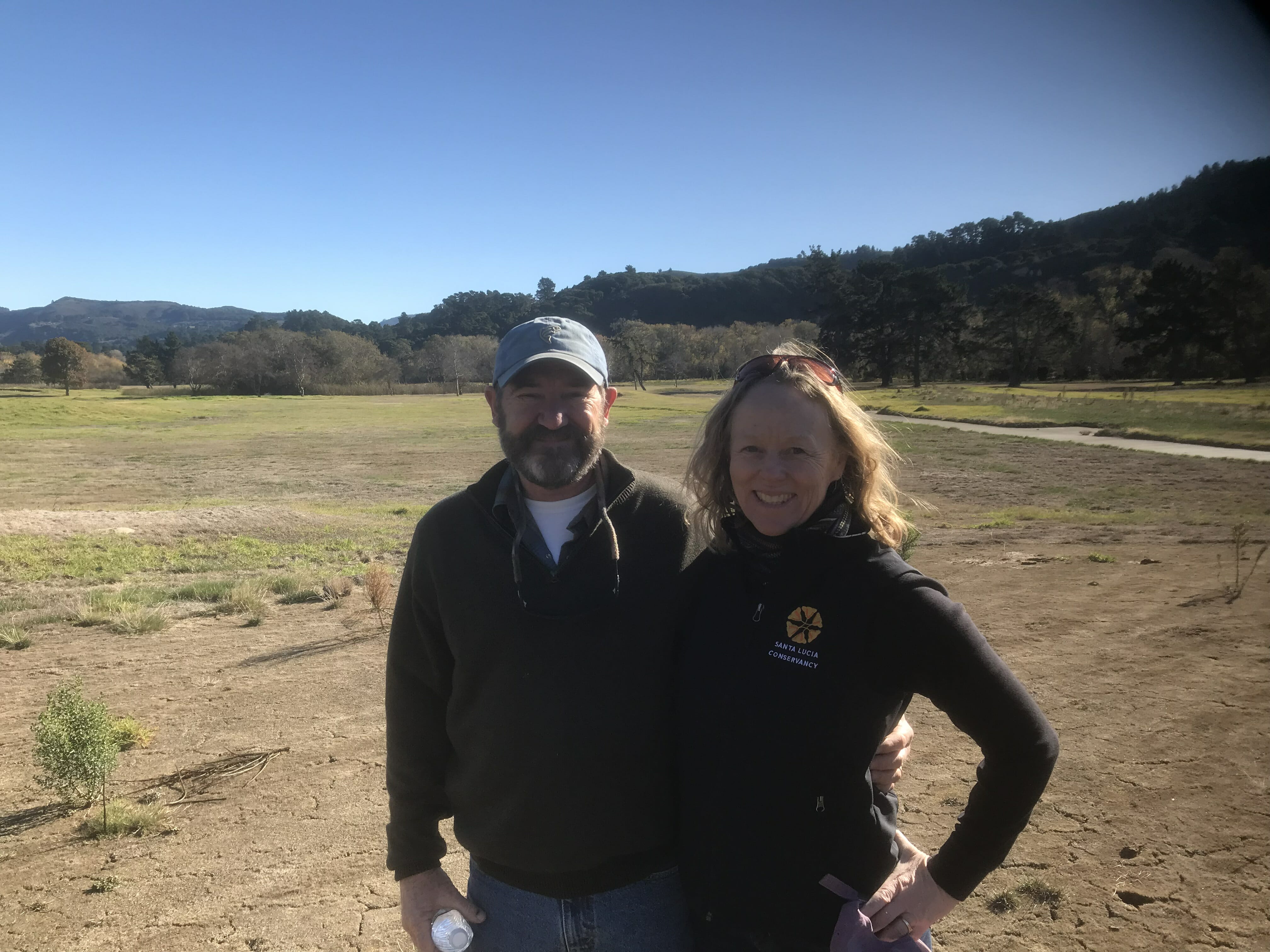By Chris Wood
Last week, I had an hour between meetings in Carmel, California, so I called Tim Frahm, who directs our CA coastal steelhead work. He invited me to look at a project that Christy Fischer, his spouse, and he had worked on. Over chicken sandwiches they told me a riveting story about how TU, the Santa Lucia Conservancy, and the Trust for Public Land beat a swarm of speculators and developers and raised $11million in less than a year to acquire a 185-acre golf course with a mile of the Carmel River and over 300 acre feet of water. The property serves as a vital wildlife corridor, and its water is crucial to helping recover steelhead in the Carmel, whose populations have declined by 90 percent.
I bet you never heard of the Rancho Canada deal. But projects such as these take place all across Trout Unlimited. Every TU staffer and most volunteers have similar stories of how patience, grit and relationships made the seemingly impossible, possible. Below are 10 other stories and accomplishments of 2017 that deserve and need telling. Read these for inspiration as we gird up for tough battles over the Pebble Mine, the Smith River Mine, the Clean Water rules, and other issues in 2018.
TU set a restoration record in the Driftless Area in 2017.
2017 was a record year for the Driftless area. Jeff Hastings and company completed more than 20 miles of stream restoration. Recall that pre-restoration a typical Driftless stream has less than 200-300fish per mile. Post restoration, many streams boast more than 3,000 fish per mile! Expect a lot more to come as our good work was just rewarded with a whopping $9 million NRCS grant for future restoration work in the area.
In September, with help from Laura Ziemer and Pat Byorth, the Kinross Gold Corporation donated more than 3 billion gallons of water to the Yellowstone River—the largest private water rights donation in history. This will help to protect the Yellowstone, where thousands of fish died a year ago due to low flows. It is also the first time a water donation resulted in a tax benefit; hopefully, paving the way to a broader trend.
It only took 29 days for Eric Booton, Austin Williams, and other Alaskan anglers to beat back the boneheaded idea of building a dam on the Snow River, an important tributary of the Kenai.
Redesigned culverts like this one in Pennsylvania reconnect spawning habitat and keep water flowing, even during high-water events.
Recent floods in Texas and Puerto Rico remind us that the climate is changing. That can be bad for people, and fish, too. In the Northeast, Colin Lawson, Erin Rodgers and others reconnected 222 miles of fish habitat by fixing perched or under-sized culverts. This is great for trout but it also helps to protect communities and infrastructure from the effects of flooding.
Historically, more than 2 million salmon spawned in the Sacramento River and its tribs; today, the numbers are a fraction of that. That may change thanks to Rene Henry and other TU scientists who helped negotiate a new multiple benefit Central Valley Flood Protection Plan. That plan will protect people and help recover fish (see the photo of the huge Central Valley chinook salmon to the right) and will be bolstered by the new Central Valley Salmon Habitat Partnership that we formed with state and federal agencies, water suppliers, and other conservation groups including California Trout and American Rivers.
The future of conservation lies in passing on a stewardship legacy. Thus summer, Andrew Loffredo convinced Costa Del Mar, TU, and the U.S. Forest Service to host a Native Trout Odyssey for a group of college kids who caught 18 species of native trout all on our public lands; and in the process, they generated over two million impressions from their blogs and reporting.
Cleaning up abandoned mines is essential for recovering wild and native trout. Thanks to Amy Wolfe, Steve Moyer, and others we made significant progress this year with passage of the Community Reclaimers Act in the House of Representatives. This will help to ease liability associated with cleaning up legacy coal mines.
TU was born in the Great Lakes, and our record there over the past year speaks for itself. Laura MacFarland and partners reconnected 42 miles of river in Wisconsin. Jeremy Geist and partners reconnected another 31 miles in Michigan; and Nichol DeMol has worked with more than 1400 students on Michigan’s Rogue River this year alone.
Helen Neville, Dan Dauwalter and others on the TU science team developed a groundbreaking tool to determine where species restoration and recolonization efforts are most likely to succeed. Developed in conjunction with NASA, USGS, the Forest Service, BLM, and several universities, the population viability tool is a game-changer when it comes to trout and salmon protection and restoration.
Native trout in the southwest need large contiguous tracts of land to survive the increasing floods, fire, and drought. Thanks to Toner Mitchell’s work with Coca Cola and the National Forest Foundation, we helped to increase water by at least 500 acre feet in Comanche Creek, an important tributary of the Rio Costilla. The Rio Costello is New Mexico’s largest contiguous watershed occupied by native Rio Grande cutthroat trout.
That work on Comanche Creek was part of broader national effort in 2017 to protect more than three million acres; reconnect 737 miles; and restore 361 miles of river. We were only able to accomplish this because of the remarkable people who work and volunteer for TU. In fact, TU volunteers broke the record with more than 700,000 volunteer hours last year.
There are those who talk about conservation, and those that do conservation. Let’s do even more in 2018.
Chris Wood is the president and CEO of Trout Unlimited. He works out of our Arlington, Va., headquarters.



